AMD Radeon Live Blog - AMD Presents: The New Era of PC Gaming
by Ryan Smith & Brandon Chester on June 16, 2015 12:00 PM EST
12:05PM EDT - AMD is talking about the rise of e-sports gaming
12:06PM EDT - Display resolutions are rapidly increasing. 4K monitors have dropped from $3000 to $400-600
12:06PM EDT - Smooth frame rates have become another area of focus, in addition to simply having a high frame rate
12:07PM EDT - Virtual reality is also an area that AMD sees as rapidly expanding
12:07PM EDT - VR requires exceptionally high frame rates and low latency
12:08PM EDT - Okay, after some WiFi problems we';re here
12:08PM EDT - Now on stage: Devin Nekechuk to introduce the Radeon 300 series
12:09PM EDT - AMD is starting off by talking about the R7 and R9 300 series cards.
12:09PM EDT - First up, R7 360
12:11PM EDT - AMD is discussing VSR. Not exclusive to the 300 series though.
12:13PM EDT - First card is the R7 360, the base of the line.
12:13PM EDT - R7 370 is next. $149 and up to 4GB of VRAM. Not clear if those two go together, as they said "up to"
12:14PM EDT - Now moving onto cards for more intensive games, and for gaming at higher resolutions
12:15PM EDT - Next is the R9 380. AMD claims it can power 1440p. Starts at $199, up to 4GB VRAM.
12:15PM EDT - R9 390 and 390X start at $329 and $429. Both have 8GB of GDDR5. Meant for 4K gaming
12:17PM EDT - Now talking about DX12
12:17PM EDT - DX12 launching with Win10, July 29th is not far away
12:18PM EDT - AMD now inviting up some game developers and a Microsoft developer
12:19PM EDT - Developers seeing significant CPU usage reductions with DX12
12:21PM EDT - Now talking to the developer from Lionhead about DX12 in the Fable series
12:22PM EDT - Asynchronous shaders to execute shading concurrently with other rendering are an important feature
12:23PM EDT - Windows 10 beta of Fable Legends coming in the near future.
12:24PM EDT - Now on display: Stardock/Oxide's Ashes of the Singularity
12:24PM EDT - Now talking about RTS games
12:25PM EDT - Oxide is going to be one of the first companies to really use DX12. They're looking to push a lot of draw calls
12:25PM EDT - RTS games have traditionally had to swap to 2D sprites when characters are too far away. Not required with DX12.
12:26PM EDT - CPU power freed up by using DX12 can be put into making more complex AI
12:27PM EDT - Alpha this Thursday
12:27PM EDT - Now moving onto VR. AMD's Richard Huddy is back on stage
12:29PM EDT - Anuj Gosalia of Oculus is talking
12:30PM EDT - AMD is going to be banking hard on VR for this generation. From a business standpoint it requires lot of GPU power, and from a tech standpoint they have what should be a good solution
12:31PM EDT - Low latency is the big focus in VR
12:31PM EDT - Now discussing how Oculus is using AMD's LiqudVR tech, which was first announced back at GDC in March
12:32PM EDT - Oculus has been working with AMD to use their LiquidVR tech
12:32PM EDT - Direct hardware access for low latency, multi-GPU per-eye rendering, async shading/warping, etc
12:32PM EDT - Oculus has shipped 150K dev kits (wow)
12:33PM EDT - Oculus has shipped 150,000 dev kits so far
12:33PM EDT - And of course, the final consumer Rift ships in Q1 of next year
12:35PM EDT - For AMD GPUs, Oculus is recommending R9 290/390 and higher
12:35PM EDT - Recommended GPU spec for Oculus is the R9 290 or faster
12:35PM EDT - This is consistent with their earlier developer target recommendation of R9 290
12:36PM EDT - Now speaking, CCP on EVE: Valkyrie
12:36PM EDT - They've been one of the darling early VR demos, and will be shipping on PC and PS4 (Morpheus)
12:37PM EDT - Game will be released alongside the Rift, so Q1 2016 (it)
12:38PM EDT - Huddy now has the stage to himself again
12:38PM EDT - Discussing how VR is being used for non-gaming applications
12:38PM EDT - Now on stage, Katrina Craigwell from GE
12:39PM EDT - GE is using VR for brain imaging visualization
12:41PM EDT - And that's a wrap on GE
12:42PM EDT - Okay, time for the high-end GPU announcement
12:42PM EDT - (If you haven't already seen the leaks, well, then you'll probably be the only person surprised by this)
12:42PM EDT - Now on stage, Chris Hook of AMD. Director of marketing
12:43PM EDT - Leading into a discussion about small form factor PCs
12:44PM EDT - Presenting Project Quantum
12:44PM EDT - A custom SFF case
12:45PM EDT - Contains 2 of AMD's new Fiji GPUs
12:45PM EDT - Processors on the bottom, cooling on the top
12:45PM EDT - Now rolling a promo video
12:47PM EDT - Begun, the Closed Loop Liquid Cooler wars have
12:47PM EDT - The company has clearly taken what they've learned from R9 295X2
12:47PM EDT - Which, though $1500 was a successful product for a dual-GPU card and a solid design
12:48PM EDT - Now on stage, AMD's CEO, Dr. Lisa Su
12:48PM EDT - "Most complex and highest performance GPU we have ever built"
12:49PM EDT - There will be multiple products with Fiji
12:49PM EDT - AMD Radeon R9 Fury X
12:50PM EDT - 1.5x perf per watt of R9 290X
12:50PM EDT - R9 Fury (vanilla) will be air-cooled
12:50PM EDT - Cards will be in stores "very shortly"
12:51PM EDT - AMD Radeon R9 Nano
12:51PM EDT - Fiji in a a 6" card, half the power of 290X
12:51PM EDT - (Sounds like it's significantly cut down from full Fiji)
12:51PM EDT - Nano will be available later this summer
12:52PM EDT - Finally, a dual-GPU card that's in the Quantum, but hasn't been named or shown
12:52PM EDT - Now on stage, Joe Marci, Raja Koduri, and Chris Hook again
12:53PM EDT - Raja is now explaining the human element behind designing Fiji
12:55PM EDT - Focus on 4K and HBM
12:55PM EDT - Specs
12:55PM EDT - 4069 stream processors, 8.9B transistors
12:55PM EDT - 4096 SPs, even
12:55PM EDT - 8.6 TFLOPs, 1050MHz core clock
12:56PM EDT - Also did some work on power management/efficiency, though now going in-depth at this time
12:56PM EDT - Raja is giving special credit to the board design team
12:57PM EDT - Joe now talking a bit more on HBM
12:58PM EDT - AMD has over the last several years been on the cutting edge of memory tech. 2015 and Fiji is no different
12:58PM EDT - HBM gets AMD more memory bandwidth, but also cuts down on memory power, giving them more power headroom for the GPU itself
12:59PM EDT - AMD will be putting HBM in more devices in the future (where costs make sense, of course)
01:00PM EDT - Raja has never been so excited in the last 20 years
01:01PM EDT - Laying the path for the future
01:01PM EDT - They see higher quality VR systems as requiring much, much more GPU performance
01:02PM EDT - The Holodeck concept and Eyefinity seems to have given way to VR and the holodeck on your head
01:03PM EDT - Joe is talking a bit about overclocking headroom. AMD says it should be a good overclocker
01:03PM EDT - Fury X goes on sale on the 24th
01:03PM EDT - $649
01:03PM EDT - Fury (vanilla) for $549 on July 14th
01:04PM EDT - Nano in the summer, dual-GPU card in the fall
01:04PM EDT - So the fight is set: Fury X needs to meet or beat NVIDIA's GTX 980 Ti. AMD is aiming to best NVIDIA's top Maxwell GPU
01:05PM EDT - To close things out, Huddy is back on stage
01:05PM EDT - Will be showing the PC version of Star Wars: Battlefront
01:06PM EDT - DICE's Lead Producer (whose name I couldn't type out fast enough) is now on stage
01:07PM EDT - Frostbite engine game, so they already have all the tech Johan Andersson has been working on
01:07PM EDT - Discussing the production of the game
01:09PM EDT - Rolling PC footage
01:10PM EDT - A very short clip indeed
01:11PM EDT - AMD will have it playable at SDCC next month
01:12PM EDT - Recap time
01:13PM EDT - That's a wrap
01:14PM EDT - Thanks for joining us, everyone







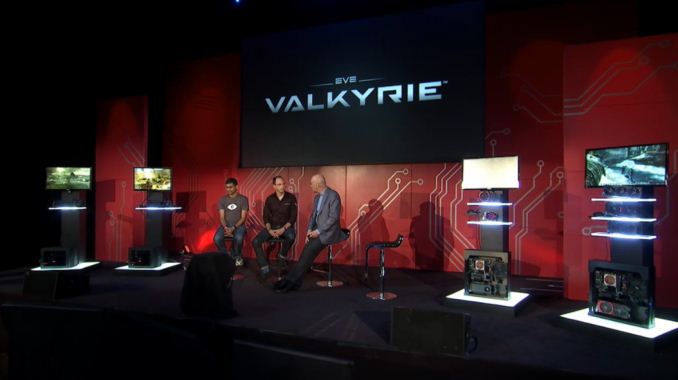
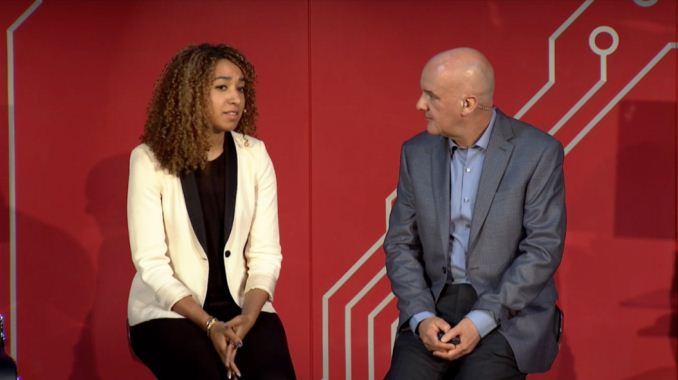
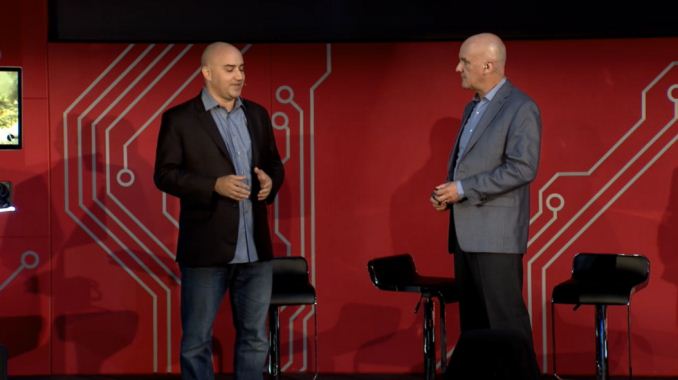
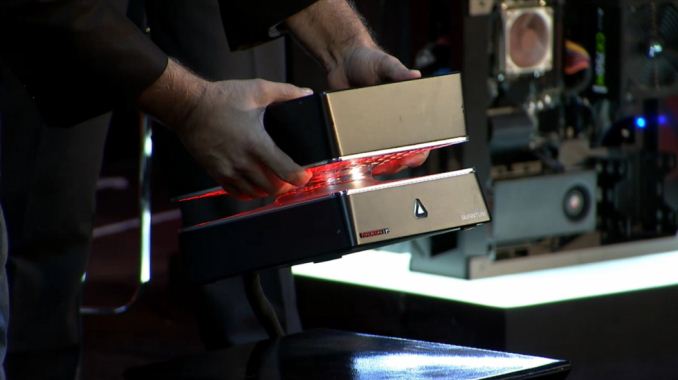
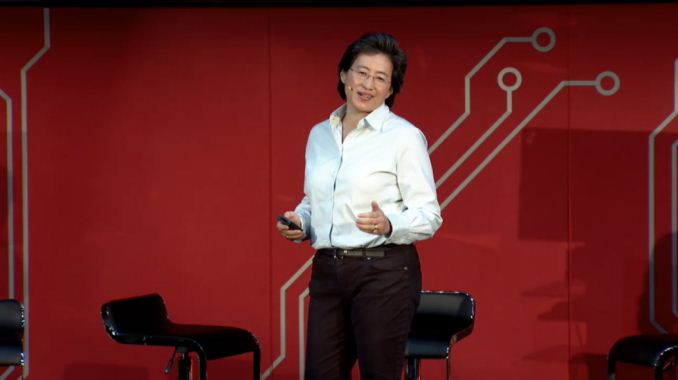

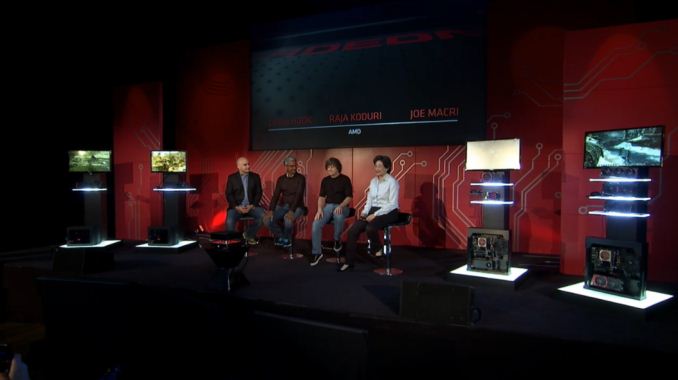
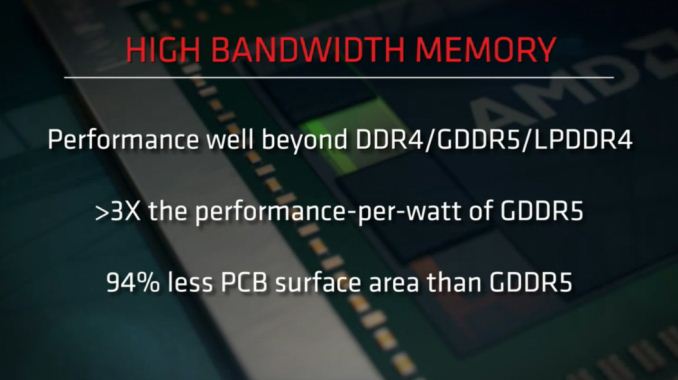
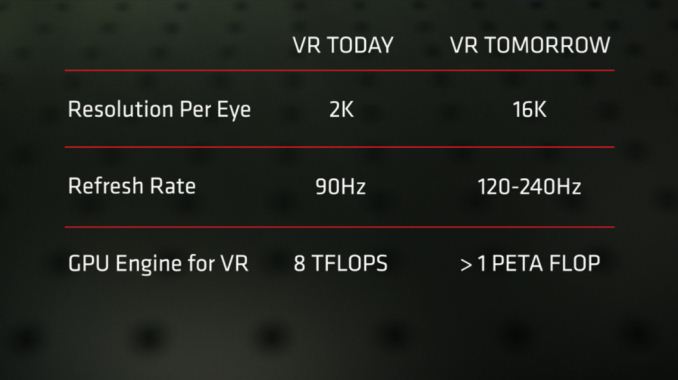

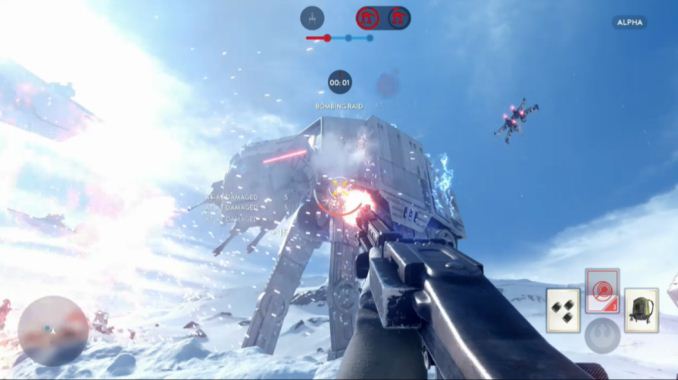








272 Comments
View All Comments
Kutark - Tuesday, June 16, 2015 - link
This is exactly what i was going to say. My suspicion is Nvidia knew or highly suspected it was slower than the Titan X, and released the 980 ti at $650 to put them in a hard position. My suspicion is they wanted to charge 800-850 for this card and it be slightly slower than a Titan X, maybe 5-10%. My suspicion is they had to delay release so they could figure out a way to get it to "beat" the titan x/980ti. So, they did do a smart thing by releasing it "stock" as a watercooled solution. A lot of enthusiasts will think thats cool. The smart ones among us know they likely did this so they could "overclock" the chip they originally intended to aircool so that it could beat the titan x/980ti. Even if its only slightly. I highly doubt this chip will have much in the way of overclocking headroom.The other thing to consider is with a water cooled 980 ti, its cost ~$100 more than a reference card but is performing 15-20% better than the ref card, which means its gonna outperform the Fury X in a more apples to apples comparison (due to the water cooling) and justify the higher cost for the pre water cooled GM-200.
chizow - Tuesday, June 16, 2015 - link
@Kutark, agree with this analysis to the tee. Its obvious Nvidia pre-emptively struck with the 980Ti to limit AMD's landing spots and taking that $850 mark off the table. We'll see what the final clocks and performance is, but my guess is we see the tables turn where AMD may win the lower resolutions but lose at the higher ones due to fewer ROPs than expected, 4GB limitation.AeroWB - Wednesday, June 17, 2015 - link
Sorry but I don't believe this. There are just too many factors that don't agree:A) AMD knew NVIDIA had a big gap between the Titan X and the 980. Add to this the fact that the Titan X uses a different (bigger) chip then the 980 with all units unlocked it was highly likely NVIDIA was going to release a product with a crippled Titan X chip around the Fury release.
B) The watercooler reference design as stock cooler fopr the top card from this generation from AMD has popped up over the internet for a very long time. this is by no means a quick fix.
C) They could have definately released the FuryX with a good air cooler with the same clocks, water coolers aren't so special as many people think.
D) Nvidia has been launching new products or decreasing product pricing around AMD launches for a long time
E) AMD knows its currrent 4GB limit for the Fury cards is a very important limitation that should be fixed soon. This is a disadvantage compared to the 980Ti/TitanX but also to their own 390/390X so this limits their potential price. If AMD were to launch the Fury at 850 USD while equipping the 390/390X with 8GB for half that price would have been a Joke. Either 8GB is BS and they are admitting it, or the Fury is very short lived product and they hope people are stupid and buy it still.
F) AMD had always had an aggressive price compared to Nvidia. Look at the price/performance graphs from the last years and you will see AMD always has more good scores than Nvidia here. Nvidia is more relying on having other advantages like G-Sync, Phys-X acceleration etc.
So to sum up, I don't believe:
- the Fury was ever going to launch at 850
- the water cooler was a late adjustment as a reaction on the 980Ti
- AMD did not expect the 980Ti
- AMD forgot that max 4GB is an important limitation for a new high-end product
D. Lister - Wednesday, June 17, 2015 - link
C) That is impossible to determine, without the actual product available for testing.E) 4GB VRAM is pretty good, if you know how to use it. Problem is, AMD has apparently had an "exceedingly poor" way of handling VRAM in the past, and they tried compensating for it by putting more VRAM to make up for their inefficiency. Their marketing of course did its best to convince all the rubes that more VRAM was always better.
"An obvious concern is the limit of 4GB of memory for the upcoming Fiji GPU – even though AMD didn’t verify that claim for the upcoming release, implementation of HBM today guarantees that will be the case. Is this enough for a high end GPU? After all, both AMD and NVIDIA have been crusading for larger and larger memory capacities including AMD’s 8GB R9 290X offerings released last year. Will gaming suffer on the high end with only 4GB? Macri (Joe Macri, Corporate Vice President and Product CTO at AMD) doesn’t believe so; mainly because of a renewed interest in optimizing frame buffer utilization. Macri admitted that in the past very little effort was put into measuring and improving the utilization of the graphics memory system, calling it “exceedingly poor.” The solution was to just add more memory – it was easy to do and relatively cheap. With HBM that isn’t the case as there is a ceiling of what can be offered this generation. Macri told us that with just a couple of engineers it was easy to find ways to improve utilization and he believes that modern resolutions and gaming engines will not suffer at all from a 4GB graphics memory limit."
http://www.pcper.com/reviews/General-Tech/High-Ban...
kyuu - Thursday, June 18, 2015 - link
I'm not sure why you think that poor usage of the graphics memory was an AMD-only problem based on that quote. They were plainly talking about the subject in general. Please keep anti-AMD biases out of your analysis. Your not Chizow so hopefully that's not an impossible request.chizow - Wednesday, June 17, 2015 - link
@AeroWB you make reasonable points, but ask yourself this. Would AMD really bother with the embarassment of rebranding their entire product stack to launch an "ultra-premium" brand that cost the same as their previous 290/X parts? It just doesn't make any sense. The only explanation that does make sense is that they had their eyes on a bigger prize, ie. the Titan.AeroWB - Thursday, June 18, 2015 - link
@chizow I think that AMD had too make a few though choices as their R&D budget is much smaller then that of Nvidia and Intel and creating a new chip is really expensive. The fact that all new GPU's are still 28nm is something that both Nvidia and AMD were not expecting a few years ago when they started designing the chips for say 2014/15. So they new chips we've seen this year are probably all designs that had to be sort of rushed which means either take a new design and scale it back to 28nm or take an existing design and improve or upscale it. AMD has had a big advantage here as they already had a lot of chips that could support DX12/Vulcan/FreeSync etc. So rebranding them was a reasonable and cheap option. AMD did not have an answer to its high power draw and didn't have a high end part to compete with the titan and so they decided to create one more GPU on 28nm with (almost) the same graphics cores as the latest version use in the R9 285 chip but now scale that chip to be really huge and to address the power draw add some more power features like target frame rate control, some power optimizations in the chip and HBM to top it off. With this approach they had to create only one new chip and at the same time develop HBM further so it can be used on the next generation of cards that will be at a new process node. Because the R&D cost of the 200 series chips have been earned back with current sales they can afford to drop the price and so be able to compete with Nvidia. Nvidia on the other hand had much more need to create a new 28nm part as their older chips were missing essential features for DX12/Vulcan so in order to fix this they had to design multiple new chips to cover the whole line-up. But instead of just "upgrading" their old core designs they did a big redesign which resulted in much less power hungry cards. Probably by integrating much of the tech they developed for the mobile parts. So both AMD and Nvidia made different decision on what to develop on another 28nm design and both choices sound very reasonable to me. Though I am, like a lot of people, disappointed the new 300 series are all rebrands as the Fiji is too expensive for me and I had hoped to pick up much better price/performance card than that was possible with the R9 290 (X) that I was going to buy. And now the new R9 390 (X) are only marginally betterchizow - Thursday, June 18, 2015 - link
@AeroWB: I actually agree with pretty much everything you wrote here, I guess where we disagree is on the actual execution and pricing decisions for Fury. At this point its probably a moot point now, I just feel like 980Ti did really surprise AMD in both price and how close it performed to Titan X, greatly limiting their landing spots for the Fury X. It just doesn't make sense to me that AMD would go through the trouble of creating an Ultra Premium brand at $650 max when they already hit those price points with their standard R9 series in the past, while bringing on this rebranding scrutiny for the rest of their R9 300 series.Ranger101 - Wednesday, June 17, 2015 - link
Wow Chizow (shill) you're really ramping up the number of bullshit Anti AMD posts asthe hard launch approaches. Guess you Nvidia employees must be a little nervous as the
prospect of losing the performance crown approaches...keep it coming man, this is very amusing :)
chizow - Wednesday, June 17, 2015 - link
Wow Ranger101 (fanboy), would be awesome if AMD just did what the big boys do and just hard launch when a product is ready. ;)But yes, I know you must be getting lonely in that cube farm in Sunnyvale/Austin/Toronto as you see more and more of your buddies leaving for greener pastures. ;)